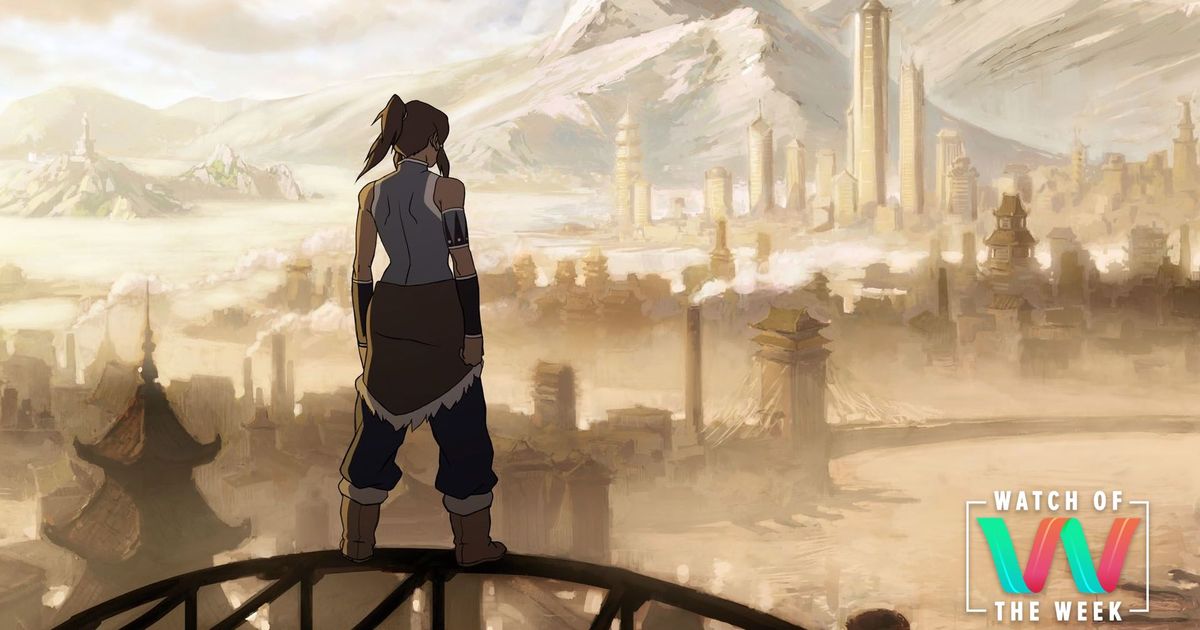
Escapist TV is part of our daily lives now, but the 2020 U.S. presidential election requires a new streaming prescription. Nickelodeon’s Legend of Korra has it all: It’s a sweeping fantasy epic with heroes and villains, spirits and magic, but also all the disillusion and vigor of a people who need to keep on fighting. Korra is optimistic and grand, but not a single character is infallible, nor are the systems and communities they live to protect. Simply put, it’s extraordinarily realistic for a cartoon about a magical world that doesn’t exist.
Legend of Korra is the sequel series to Avatar: The Last Airbender, from creators Michael Dante DiMartino and Bryan Konietzko. They reunite much of the production team, which gives Korra the same visual language as Avatar, with slight advancements, and another gorgeous soundtrack from Jeremy Zuckerman and Benjamin Wynn.
Korra picks up roughly two decades after the death of Avatar Aang, with a new Avatar reincarnated in the form of 17-year-old Korra (Janet Varney). She might be the master of all four elements (water, earth, fire, air) and bridge to the spirit world, but she’s also a hotheaded, impulsive teenager, dissimilar in every way from her monk predecessor.
Airbender is to Korra what Star Wars is to The Mandalorian. It establishes the world, sets the stage, and provides countless Easter eggs for fans of both, but it isn’t strictly a necessary precursor. Korra is more mature from the outset, with older protagonists and nuanced conflicts, while Avatar might turn off viewers who feel talked-down to by a kids’ show (you’d be wrong to feel this way, but sure). The romance hits differently with everyone in the throes of adulthood — a sharp contrast to Avatar‘s innocent crushes.
From the very first minutes of Legend of Korra, its protagonist proves she is an unrivaled badass — a queer woman of color who is unequivocally the most powerful person in the world, a rarity on TV even now, let alone in 2012. The show builds out its New Team Avatar: Asami (Seychelle Gabriel), a shrewd businesswoman, Mako (David Faustino), a stoic firebender, and Bolin (P.J. Byrne), a himbo Earthbender. The cast includes a rotation of familiar guests, including Daniel Dae Kim, Aubrey Plaza, Rami Malek, and more.
Avatar had the elements and their respective tribes and benders, and Korra builds beautifully on that world. The four nations integrate and mix benders with non-benders, creating new conflicts in their industrially advanced society. That’s how we get Bolin and Mako, brothers who manipulate different elements. It’s how we get pro bending leagues and all those 1920s visual inspirations, and how we get villains like Amon (Steve Blum).
Ah yes, the villains. While Aang spent three seasons preparing to defeat one villain, Korra faces off against numerous nemeses that all make Firelord Ozai look like the cabbage guy from Kyoshi Island (okay maybe you need to watch Avatar just to understand this review). Instead of an unequivocal Face of Evil, Korra’s foes deal deeply in the gray. More than once, her enemies hide in plain sight, posing as allies to take advantage of Korra’s power and position.
Despite its merits, Korra can be a bit of a slow burn. While the characters and world remain throughout, each season introduces new antagonists, settings, and arcs for Korra — as every TV show should, but the emotional fallout compounds each time, for us and for Korra. Her lived trauma as the avatar takes a toll in later seasons, distinguishing her from Aang with his childlike pep or even the feisty Korra of the early seasons. But again, this is evidence of Korra‘s refreshing maturity and themes explored more and more in hero narratives, like Tony’s PTSD in Iron Man 3. Saving the world isn’t all fire fights and joy rides. It’s work, and it’s pain, and it’s costly.
Korra was ahead of its time in that respect, especially when you invoke the MCU as a comparison. Iron Man 3 came out during Korra Season 2, and it would be years before Captain America: Civil War and Spider-Man: Homecoming gave us compelling factions and characters who suffered as collateral damage in the wars of superpowered beings. But the carefree sheen of a so-called kids’ show is deceptive. Korra is full of haunting ambiguity, high stakes, and consequences. The creative minds behind our favorite kids’ shows are adults who, like us, have seen some shit, and use their stories to enrich a world that might sorely need it.
The Legend of Korra is streaming on Netflix.
